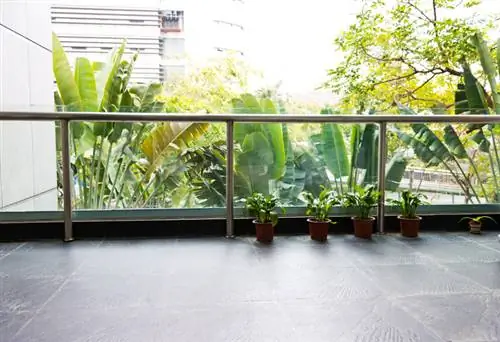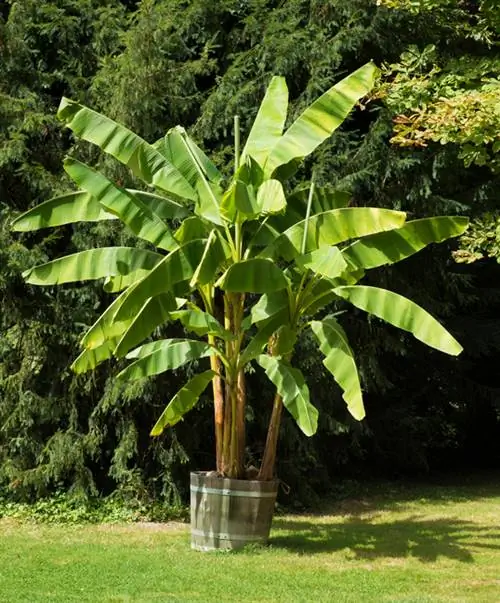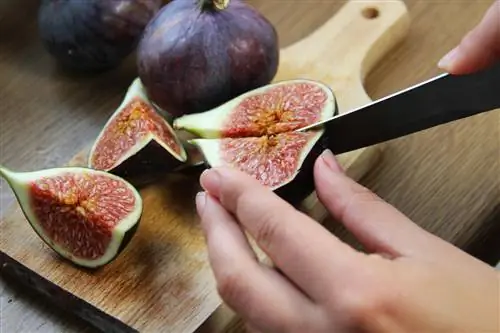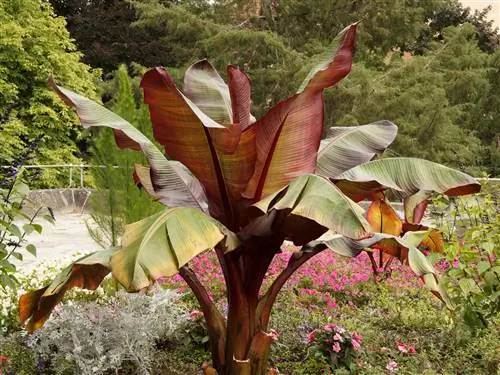- Author admin [email protected].
- Public 2023-12-16 16:46.
- Last modified 2025-01-23 11:19.
The Japanese fiber banana (Musa basjoo) is generally considered the “hardiest” of all banana plants. However, this attribution should be viewed with caution, because even for this relatively easy-care type of banana, things can quickly become critical at temperatures below minus 15 degrees Celsius.
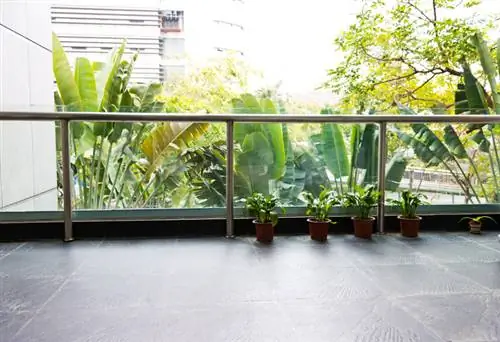
How can you properly overwinter the Japanese fiber banana?
In order to overwinter the Japanese fiber banana successfully, plants grown in pots should be given a cool winter quarters with high humidity, whereby waterlogging should be avoided and water and fertilizer doses should be reduced. For planted specimens, waterlogging, frost temperatures and strong temperature fluctuations should be avoided.
Plant out or cultivate in a pot?
In some regions of Central Europe you can actually admire stately specimens of this type of banana in the wild. As a rule, these are Japanese fiber bananas, which are spared from severe winter night frosts in coastal regions or in mild wine-growing climates. In most mountainous and cooler regions, however, growing in a container is preferable if you want to be on the safe side. Even in warmer climates, young plants should be kept indoors for the first few years and only be planted out when they are a certain age. However, specimens that overwinter outdoors should be protected from:
- Waterlogging
- severe frost temperatures
- strong temperature fluctuations
Properly overwinter and care for the Japanese fiber banana in the pot
From spring to autumn, a warm and sunny location is important for every banana plant so that the plant can develop well. The pot should be sufficiently large and refilled annually with suitable plant substrate (€14.00 on Amazon). Before moving to winter quarters, the wilted leaves of the Japanese fiber banana should also be cut off. A few weeks beforehand, water supply and fertilizer are reduced and finally stopped completely. To prevent an infestation with spider mites, the cool winter quarters should have the highest possible humidity.
Tip
Specimens of the Japanese fiber banana that arrive over the winter do not always only suffer from unsuitable temperature conditions. Unfortunately, waterlogging in cool winter quarters can very quickly lead to a dangerously advanced degree of root rot. Therefore, plant pots for the Japanese fiber banana should be provided with a suitable drainage layer.

